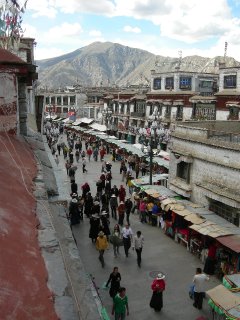
The Tibetan centre of the city is called the Barkhor, and it's made up of randomly connecting streets of Tibetan architecture, full of market stalls selling fruit, meat, yak produce, clothes, arts and crafts and tourist souvenirs. Outside of that area is mostly a Chinese city like any other, with its wide, straight boulevards and cheap clothes shops lining them all the way.
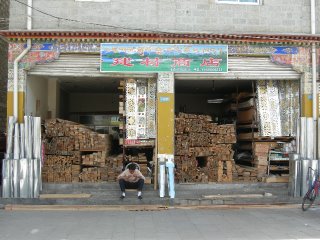
Backstreets of the Barkhor.
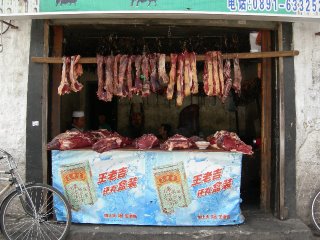
Every morning, when we left our hostel on the edge of the Barkhor, we would have to run this gauntlet of butchers selling slabs of yak meat. Yak produce is absolutely essential to Tibet: yak meat, yak butter, yak butter tea, yak cheese, the fur... and so on. Yak meat is okay, but it has a strong taste that I can't quite place, so I didn't really want to eat it. Not that you'd want to eat it anyway when it is sold in these conditions. At best, some meat-sellers would put out a stick of incense to ward off the flies. I guess the whole commerce depends on them selling the meat before the flies have time to lay eggs, and that you will cook it well enough to kill off any germs that may have built up on it. Yeesh.
But all that meaty grossness was made up for by watching Emily the vegetarian squirm and cover her mouth with a shawl every time we left the hostel. One night on our way back to the hostel we were even treated to the full, gutted carcass of a yak being thrown out on the pavement in front of us. She screamed, I laughed.
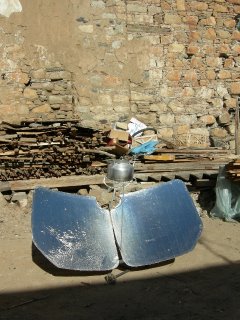
This is an ingenious invention and one that I saw all over Tibet: a contraption that focusses the sun's rays to boil your kettle. It even had a crank at the bottom so you could adjust the focus and switch it off if necessary.
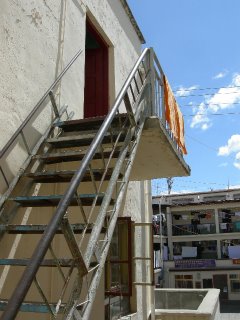
The scary stairs leading up to our room at the hostel. They were perfectly well welded and structurally sound, but the metal of the step surface was itself pretty thin, so when you trod on it, it buckled a little and made a noise. For a week I trudged up and down those stairs, nervous and out of breath, but by the end of the trip I was bounding up and down them.

This was in the Summit Cafe... which may not be Starbucks by name but was certainly Starbucks by nature, and we would come here a lot to relax and read, and we also met some interesting travellers here. It's a toss-up as to what the cafe's best feature was: the immaculate, western style toilets which even had toilet paper or the world's best ice mocha, smooth and thick like a milkshake.
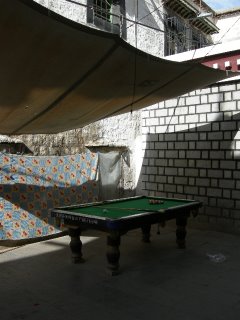
Apparently, the Tibetans love snooker (or pool, whatever). You'd see these pool tables everywhere in the backstreets and even out in the countryside, in the middle of nowhere, or on top of mountains.
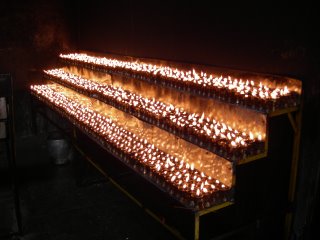
This was the candle room (for want of a better term) at the Ramoche Temple. Boiling hot beyond belief, but so beautiful. The floor was incredibly slippery from candle wax.
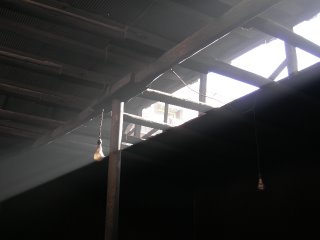
The light coming in from the ceiling.
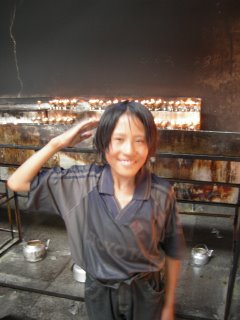
This was the adorable boy who I wanted to adopt. He was just radiated such an aura of kindness.
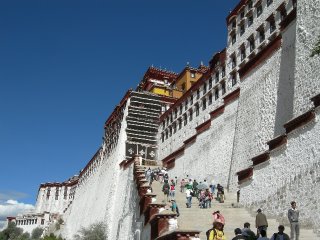
Walking up the mountain-like stairs of the Potala Palace. Some say this building is boxy and ugly, but I felt it had beautiful colour, texture and proportion and I really liked its gradated asymmetry.

One of the few places within the building that you could get away with taking a photo. Unfortunately the interior feels like little more than a museum; it has been stripped of monastic life and the prescribed route which tourists take runs anticlockwise around the building, in direct contravention of the Tibetan custom of walking clockwise around religious sites.
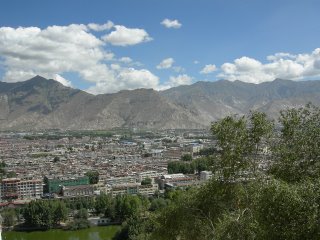
A view from the Potala over part of northern Lhasa, showing how unexpectedly big the city is. And this is only a small part - I wasn't ever able to get a panoramic view of Lhasa.
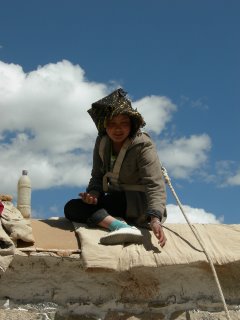
On the way out, I saw these Tibetan workers laying new plaster on part of the walls. Builders in Tibet always sing while they are doing their work and it gave a little touch of humanity to an otherwise beautiful but spiritually empty visit.
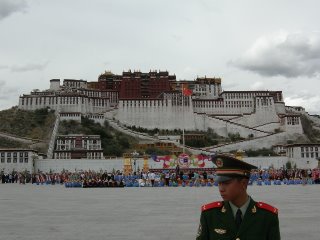
Starting around the 23rd September was the Yoghurt Festival in Lhasa, which I will mention a little more about another time. There was some Tibetan dance taking place in the "People's Square" built opposite the Potala (after having razed Tibetan homes). The crowd wanted to watch up close, but the Chinese guards kept pushing us back and back and back. They weren't brutal or anything, but it was just such a frustrating display of authority.
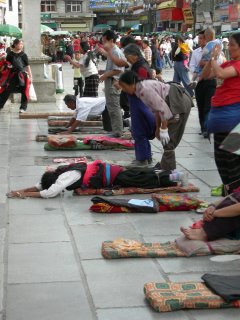
Tibet is thronging with pilgrims, constantly murmuring prayers, counting rosary beads, swinging these lollipop-like prayer wheels in their hands, walking clockwise around religious sites and most moving of all, prostrating themselves in front of temples and monasteries. I have never been somewhere where the people are so devout.
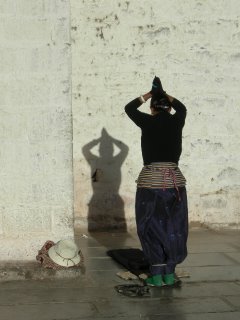
The prostration in this picture and the one above is taking place in front of the Jokhang Monastery in the centre of the Barkhor, the most sacred place in Tibet. Inside, it was a remarkable contrast to the Potala - monks were chanting, pilgrims were lining up to pray to the statue of the Buddha and so on; it felt alive.
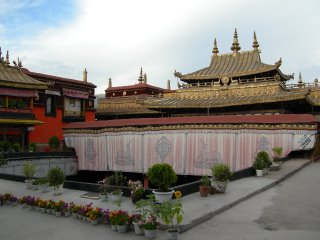
The gorgeous roof of the Jokhang.
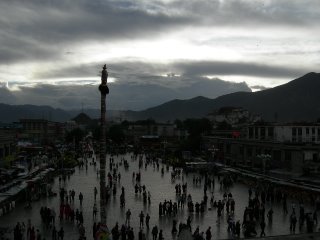
Looking down from the roof of the Jokhang onto Barkhor Square at dusk.
No comments:
Post a Comment